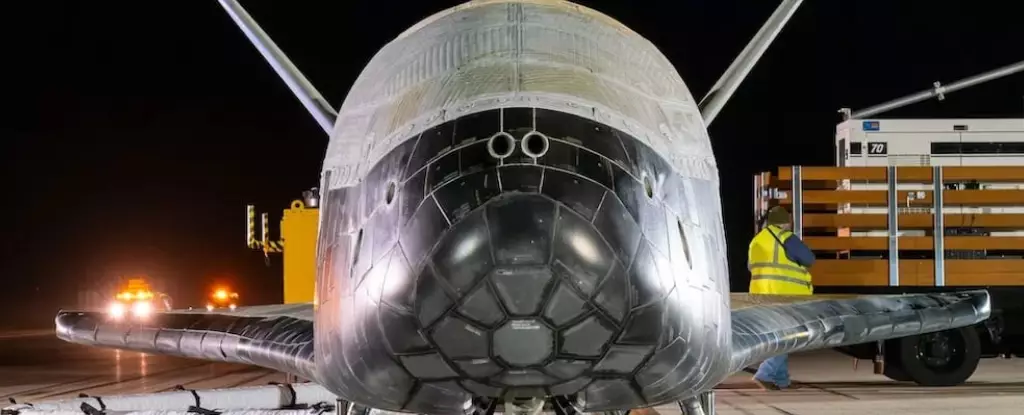The X-37B space plane, a triumph of modern engineering, stands at the intersection of aerospace innovation and military strategy. Developed through a collaboration between NASA, Boeing, and the US Department of Defense, this sleek aircraft has captivated the imagination since its inception in the late 1990s. Initially conceived as a NASA project aimed at exploring the viability of reusable spaceplane technologies, the mission’s trajectory shifted dramatically when it transitioned to military oversight in 2004 under the auspices of the US Air Force. This evolution underlines a complex narrative—one that reflects both the strategic imperatives of space as a frontier and the relentless pursuit of technological advancement by the United States.
Measuring just under nine meters in length with a wingspan of about 4.5 meters, the X-37B resembles a miniature version of its predecessor, the space shuttle. However, its uncrewed design and advanced capabilities distinguish it in the realm of space exploration. Capable of extended missions in low Earth orbit, the X-37B serves as a critical platform for testing innovative technologies, with the added advantage of returning objects to Earth for post-flight analysis.
A Pioneering Force in Space Technologies
Since its inaugural launch in 2010, the X-37B has completed seven missions, each longer and more complex than the last. This evolution not only showcases the vehicle’s pioneering design but also marks its increasing significance within the framework of space operations. For instance, the recent seventh mission highlighted the spacecraft’s remarkable versatility, as it successfully utilized a SpaceX Falcon Heavy Rocket for the first time. This partnership with a commercial launch provider signals a paradigm shift in how military and civilian aerospace endeavors collaborate, emphasizing efficiency and operational readiness.
During its missions, the X-37B engages in various experiments that remain classified, providing a layer of operational secrecy that underscores its military applications. The public acknowledgment of its participation in advanced guidance systems and the development of thermal protection materials suggests that the technology behind the X-37B has implications far beyond immediate military objectives. Instead, it contemplates a future where the understanding and management of our orbital environment become crucial.
Enhancing Space Domain Awareness
An important facet of the X-37B’s operations is its capability to enhance space domain awareness—a critical aspect of modern space operations. By employing innovative protocols for tracking and detecting objects in orbit, the X-37B has become instrumental in monitoring satellites and addressing space debris, which poses significant risks to both civilian and military assets in space. The ability to conduct aerobraking maneuvers, using atmospheric drag to adjust its orbit efficiently, is further testament to the advancements in orbital mechanics that the X-37B embodies.
Lt. Col. Blaine Stewart’s remarks on the results of Mission 7 reflect a broader concern among military strategists regarding the increasing congestion in space. As more nations and private companies launch satellites and other objects into orbit, the need for an acute understanding of the space environment has reached critical levels. The contributions of the X-37B to these missions validate its role as a sophisticated tool for enhancing national security and ensuring the safety of vital space assets.
The Future of Space Exploration
The implications of the X-37B’s ongoing missions extend well beyond their immediate technological achievements. Each successful flight not only builds upon the knowledge gained from previous endeavors but also prepares the groundwork for forthcoming challenges in space exploration. As the realm of low Earth orbit proliferates with more players, the role of advanced aerospace vehicles like the X-37B will only grow in significance, pushing the boundaries of what we understand about orbital dynamics and strategic military operations.
In essence, the X-37B space plane is not just an artifact of aerospace innovation; it is a symbol of the United States’ commitment to maintaining its strategic advantage in an increasingly competitive space frontier. Through its ingenuity and adaptability, this remarkable vehicle continues to pave the way for future exploration and operational readiness, embodying the spirit of discovery that propels humanity into the cosmos. The journey of the X-37B beckons us to consider not only what lies ahead in terms of technology but also how the understanding of our cosmic neighborhood might shape security and cooperation in the years to come.

